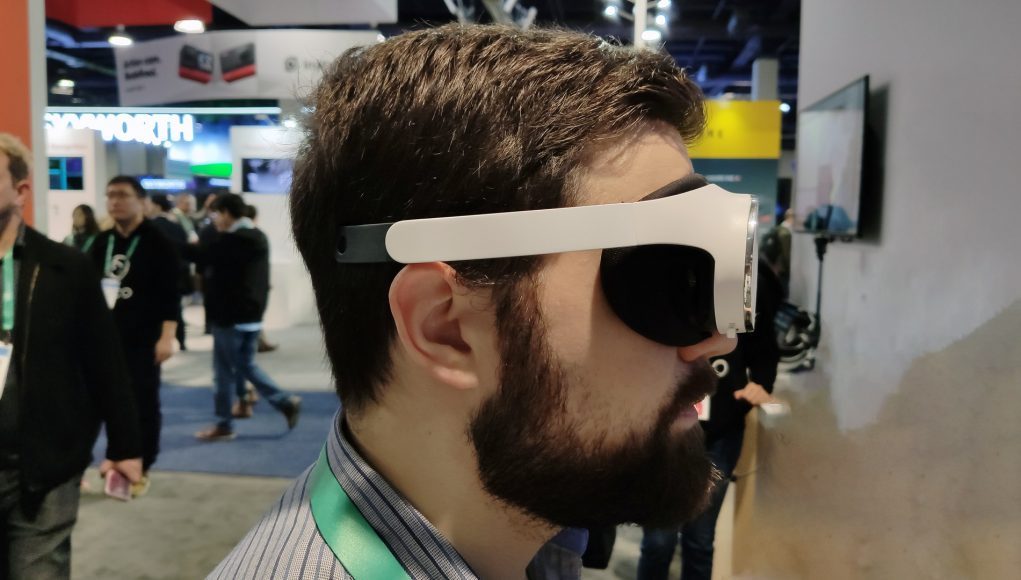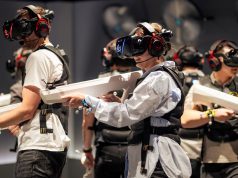This week at CES 2020, Pico quietly revealed a prototype headset which its calling the Pico VR Glasses. This phone-tethered 3DOF ‘VR viewer’ was surprisingly complete, offering a decent resolution and field of view, focus adjustment, and motion controller in a compact form-factor that’s light enough to stay on your head.
When Pico made its CES announcements earlier this week, the company talked about its new Neo 2 standalone VR headset, a Quest-like device targeting enterprise customers. But when we went to the company’s booth on the show floor, we saw a curious device sitting next to their Neo headsets. The so called Pico VR Glasses is a prototype small form-factor headset that’s designed as a ‘VR viewer’ of sorts—a lightweight, 3DOF headset designed to tether to Android phones for casual VR experiences.
Especially considering that it’s still a prototype, it’s the most impressive ‘VR viewer’ headset I’ve seen yet, being several steps ahead in completeness over others, including a similar VR viewer that Panasonic revealed this week.
Pico VR Glasses at CES 2020
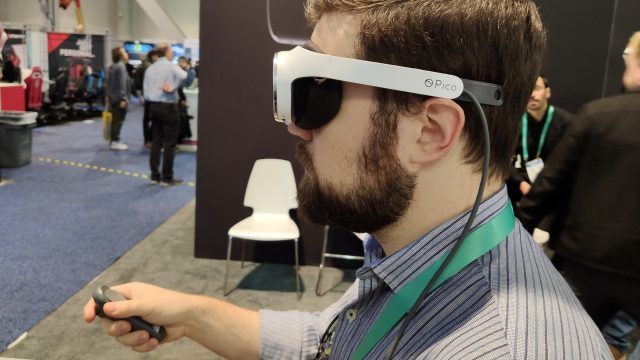
Pico’s VR Glasses prototype employ a 90Hz, 1,600 × 1,600 LCD display in each eye, 3DOF headtracking via an on-board IMU, and a 3DOF motion controller. Each eye has a 0-800 diopter adjustment for focus, and while the provided spec sheet says “51mm–75mm IPD,” I saw no physical IPD adjustment on the prototype (so this may have referred to a software adjustment only).
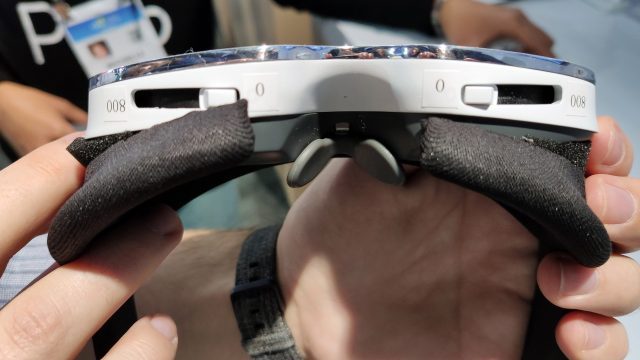
At just 120 grams (excluding the arms of the goggles), the VR Glasses actually stayed on my face with no issue, unlike a handful of other viewers I’ve seen which are too front-heavy that they need to be held up or augmented with some additional strap.
In my hands-on with the headset, the viewer was plugged into an Android smartphone and ran a Daydream-like interface from which I could launch games and media. I was impressed to find a reasonably large FOV given the compact form-factor, and especially one which filled out the entire lens rather than being cropped by the edge of the display. This is known as a ‘lens limited’ field of view, which tends to feel much more natural than a ‘display-limited’ field of view which shows a hard edge.
Pico claims a 90 degree field of view on the VR Glasses, and while that sounds a bit aggressive—at least against the woefully undefined measurements touted by other headset makers—it wasn’t that far off from what you’d expect in an Oculus Quest or Rift. For the casual VR use-case (seated, 3DOF), it felt perfectly viable.
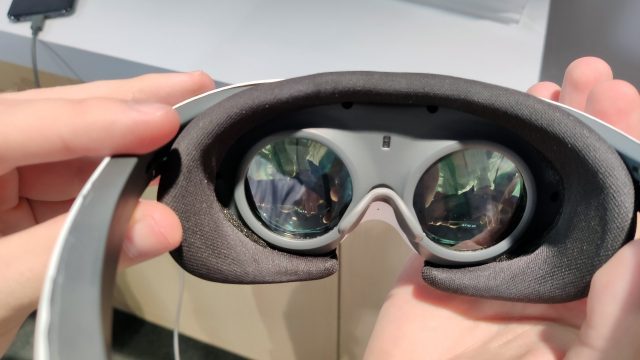
There was a small but notable latency to the headtracking and misalignment of the lenses which would need to be sorted out before this became a real product. Considering the headset’s ‘prototype’ designation, I won’t make a stink about for now; near as I can tell, it’s a lack of final tuning rather than a fundamental issue.
The Secret to Small
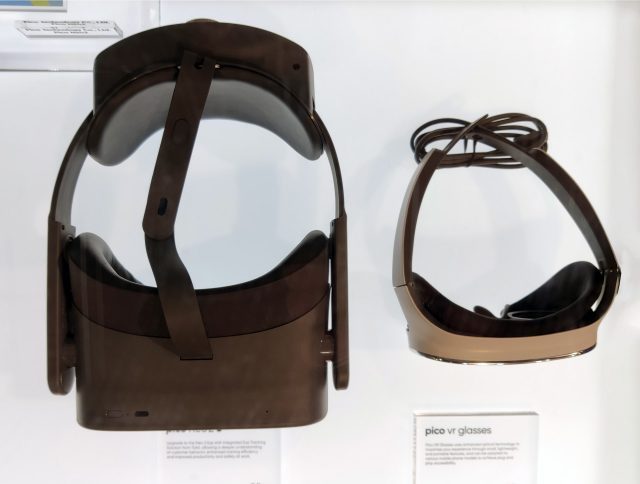
What makes the Pico VR Glasses so small compared to headsets like Rift or Vive? The biggest factor is the headset’s novel ‘pancake’ lenses, which Pico says is of their own design.
Most consumer headsets today use a single, simple lens. In order to correctly focus the light from the display onto your eye, the display must be at a certain distance from the lens. For simple lens designs, it’s difficult to make the distance from the display to the lens smaller than what we see in headsets like Rift and Vive, which is why so many of today’s headsets feel like boxes on your face.
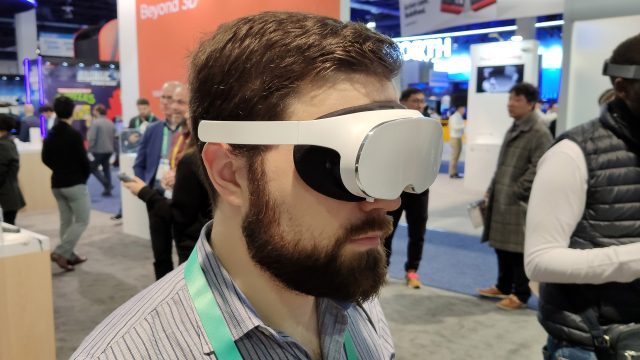
The pancake lens approach condenses the length of the optical path by ‘folding’ it back on itself through the use of polarized light and multiple lens elements. This approach has various tradeoffs, but allows the display to be much closer to the lens compared to the simple, single lenses found in most consumer headsets today.
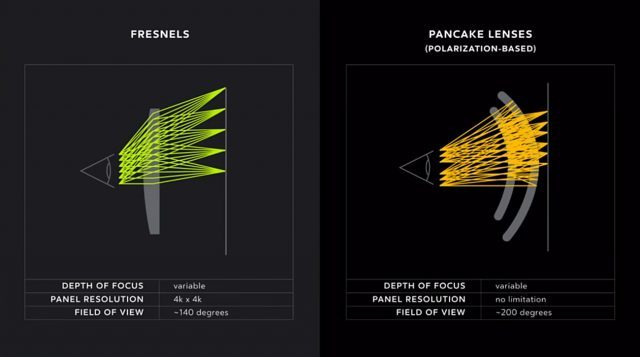
Beyond using Pancake lenses, Pico’s VR Glasses also off-board most of the other components—the headset has an IMU for tracking, but it relies on a phone for compute and power. Further still, the headset lacks any sensors for inside-out head, controller, or hand-tracking… which brings me to my next thought.
We’re Past 3DOF, Even for Casual VR

As the prototype exists today, the Pico VR Glasses would have been a great Daydream-like headset back in, say, 2017. But VR has evolved much since then, and 3DOF tracking just feels like a huge step back. Even for casual, seated VR experiences, it’s important for comfort and immersion to be able to track the movements of the user shifting in their seat—not to mention how much it limits the kind of experiences the headset can support.
For the VR Glasses to be a truly viable product in 2020 or beyond, Pico will need to figure out how to get some cameras on board to support 6DOF tracking on both head and hands (doing 6DOF head and only 3DOF hands is a mistake made clear by Lenovo’s Mirage Solo). Inside-out tracking would also open the door to a pass-through feature (which is increasingly a key convenience in a VR headset), and controller-less hand-tracking which would probably be a great fit for VR Glasses considering the likely focus on causal, phone-based experiences.
This is no easy feat though, especially considering the extra power and compute requirements that such tracking would add, and the need to send that much more data back and forth between the phone and headset.
Once the right components come into place, Pico may have the chops to pull this off though, considering the company is one of just a handful so far to have built a solid standalone 6DOF headset, it’s upcoming Pico Neo 2.

